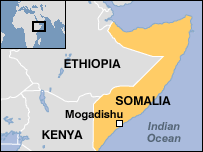For some people the world of music is reduced to the few songs they hear on their local radio station. If they get really adventerous they may actually purchase a CD! The sad part is there is an entire world out there of music and people seem to be unaware or unintrested. For the few who may be willing to explore I would like to point you to a very intresting and exciting musical project. It is called the Silk Road Project. The title was the first thing that caught my attention. It was 1985 when I purchased the Cd Silk Road by Kitaro:

You can learn more about his music at: www.kitaromusic.com
The second I hit play on my Cd player I was blown away. I still have the CD today and listen to it on a regualar basis. So when I heard of the Silk Road Project I was intrested.
The next thing that caught my attention was that Yo Yo Ma begain the project in 1998. If you know anything about music you know who Yo Yo Ma is! If for some reason you have been away from the planet earth for the last 20 years, let me introduce you to him:

Yo-Yo Ma (Chinese: (born October 7, 1955) is a French-born Chinese-American cellist, considered one of the finest in the world.
I discovered him in 1986 when I purchased the CD Dvorak: Cello Concerto; Silent Woods: Rondo
The minute you hear Yo Yo Ma play you are hooked!
So when I heard heard about the Silk Road project I was immideatly intrested.
The Silk Road Project is:
Silk Road Project, Inc. is a not-for-profit organization, initiated by acclaimed cellist Yo-Yo Ma in 1998, promoting collaboration among artists and institutions, promoting multicultural artistic exchange, and studying the ebb and flow of ideas among different cultures along the Silk Road. The Project is an umbrella organization for a number of artistic, cultural and educational programs.
The organization has published a book, commissioned 20 new chamber music compositions, and created educational material entitled "Silk Road Encounters." The Silk Road Ensemble has produced three CDs.
You can learn more by following these links:
Silk Road Project, The
On the Silk Road with Yo-Yo Ma
Live at NPR: Yo-Yo Ma & the Silk Road Ensemble
Yo-Yo Ma Continues His 'Silk Road Journey'
Yo-Yo Ma speaks about the innovative Silk Road Project in this special interview.
This project has produced three recordings:
Silk Road Journeys

The Silk Road Silk Road-a Musical Caravan

Silk Road Journeys: Beyond the Horizon

You may be asking why all this attention on the silk road and waht is it?
The "Silk Road" refers to a series of routes that crisscrossed Eurasia from the first millennium B.C. through the middle of the second millennium A.D. The best known segment of the Silk Road began in the Chinese capital of Chang'an (Xian), diverged into northern and southern routes that skirted the Central Asian Taklamakan Desert, converged to cross the Iranian plateau, and ended on the eastern shores of the Mediterranean in cities like Antioch and Tyre.By the 4th century B.C. when Alexander the Great crossed the Indus River into Central Asia, Chinese silk had already found its way to the Mediterranean. Important periods for the Silk Road were the Chinese Han dynasty (206 B.C.-A.D. 220), the Chinese Tang dynasty (A.D. 618-907), and the Mongol Khanate (13th and 14th centuries). The Mongols, who ruled a vast empire, safeguarded a northern Silk Road land route that crossed the Eurasian steppes.Sea routes, important for trade and for communication, may also be considered part of the Silk Road. During the Han dynasty, Chinese ships traded with Southeast Asian kingdoms. During the 7th and 8th centuries, Chinese, Korean, and Japanese ships crossing the East China Sea and the Sea of Japan brought continental goods to Japan. The 8th-century Shôsôin collection of objects, which originally belonged to a Japanese emperor, is the single most important group of Silk Road-related luxury items still in existence. This collection reflects the arts of the Mediterranean world, Persia, India, Central Asia, China, Korea, and Japan. Chinese ships also sailed to India and Persia, and even, in the 15th century, to Africa. Indians and Arabs traded along the southern sea routes, and in the 16th century Portuguese and other Europeans sailed to East Asia.Many important scientific and technological innovations migrated along the Silk Road to the West. Transfer of these innovations, including gunpowder, the magnetic compass, the printing press, silk, mathematics, ceramic and lacquer crafts, was gradual, so that the West had no clear idea as to their origins. Musical forms and instruments traveled the Silk Road. String, wind, and percussion instruments from both East and West influenced each other. A five-stringed lute from India and four-stringed lutes from Persia are found in the Shôsôin collection. The Persian mizmar, a reed instrument, seems to be an ancestor of the European oboe and clarinet. Cymbals were introduced into China from India and Chinese gongs traveled to Europe.
I hope all this information will be useful to you. I also hope this article will encourage you to explore some of the great music I have written about.











